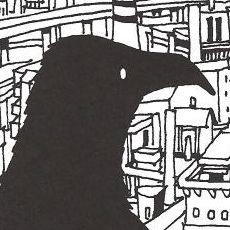-
NANA – 3 – Broken Social Scene
/
/ ReviewsRead More →: NANA – 3 – Broken Social SceneNana K is living an easy life as a student until her three closest friends decide that they are going to go to study art in Tokyo. It would be harsh to say Nana is untalented, but she isn’t good enough for university yet; and so she faces a future without her friends, on her…
-
Ergo Proxy – 6 – Learning about death
/
/ ReviewsRead More →: Ergo Proxy – 6 – Learning about deathI’ll warn you now this entry contains (literally) life-and-death spoilers, so if you haven’t seen episode 6 of Ergo Proxy yet you may want to look away. Hude and Queen get it in the neck this time, though it didn’t leave me with much of an emotional impact. Perhaps it’s because I expect everyone in…
-
Can an opening theme resurrect a series?
/
Read More →: Can an opening theme resurrect a series?Is an opening theme enough to reignite interest in a series? I guess it is for me because I’ve just seen the third opening sequence for mediocre vampire slasher Blood+ and suddenly I’ve been persuaded to give this show another chance. First time around I discovered Blood+ was terribly predictable, but if Production I.G devote…
-
Skewed tastes of the otaku
/
Read More →: Skewed tastes of the otakuWith blogger hubs like Blogsuki and the AnimeAntenna cropping up, now is as good a time as ever to gauge how the tastes of the hardcore anime fan often differ from that of the general anime buying public. According to the stats provided by Blogsuki, the most popular shows currently being blogged are Mai Otome,…
-
Tokko – 1 – Horror, gore and siscon (in that order, repeat)
/
/ ReviewsRead More →: Tokko – 1 – Horror, gore and siscon (in that order, repeat)I’m a horror fan, have been all my life and aside from the claret soaked GANTZ, I’ve seen nothing lately that’s been up to quenching my thirst for such sheer bloody antics. That is until I saw the first episode of TOKKO. Before launching into horror fan hyperbole, I’ll state right now that TOKKO isn’t…
-
Memoirs of a Shounen Jump fan – Dragonball Z
/
/ ReviewsRead More →: Memoirs of a Shounen Jump fan – Dragonball ZDespite being both loved and loathed by an ever collecting legion of frothing fans, the various anime derived from Japan’s own Shounen Jump are undeniably the flag bearers of anime to our mainstream generation. As much as I like to think of myself as a serious anime fan, I must now confess that I happen…
-
One Piece – Adventure of a lifetime!
/
/ ReviewsRead More →: One Piece – Adventure of a lifetime!One Piece is a brilliant series. I’ve slowly come to realize this over the last few months and indeed, it’s my find of 2006. Void of the macho posturing that dogs it’s Shounen Jump brethren and brimming with such vibrant, colorful adventure- it’s a tragedy to see how it’s being handled outside of Japan by…
-
NANA – 2 – Make up the breakdown
/
/ ReviewsRead More →: NANA – 2 – Make up the breakdownAn episode I enjoyed much more than the first, NANA episode 2 is a much needed dramatic and character-driven piece. I remarked after the first episode that Nana K is a ditz, implying that basically she is a superficial person with her head in clouds, in love with the idea of being in love. With…
-
NANA – 1 – Sisters are doing it for themselves
/
/ ReviewsRead More →: NANA – 1 – Sisters are doing it for themselvesSetting the scene Nana has plans to move to Tokyo and live near her boyfriend. On the train journey there, she bumps into another woman called Nana; who also happens to be 20 and is planning to live in Tokyo too. Their fashions and personalities strike such a strong contrast, like night and day; Nana…
-
Paranoia Agent – Happy Family Planning censored in the UK
/
Read More →: Paranoia Agent – Happy Family Planning censored in the UKFor those who aren’t aware, I’m based in the UK. Being an anime fan in England isn’t so bad, though like every country, we have to put up with the occasional scandal; and this week one such scandal has been making waves in our anime community. Basically, the BBFC have decided to censor a section…
